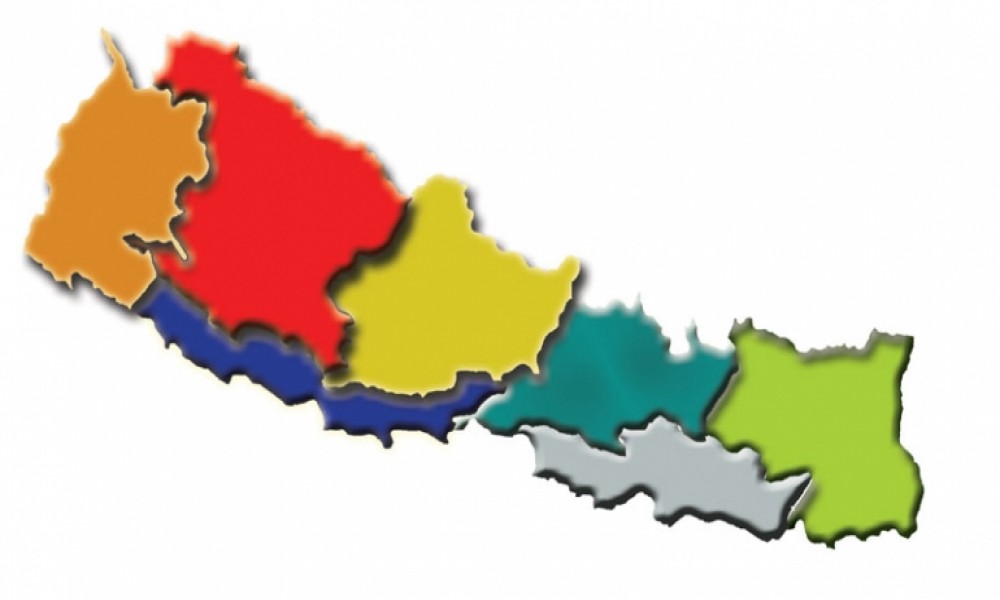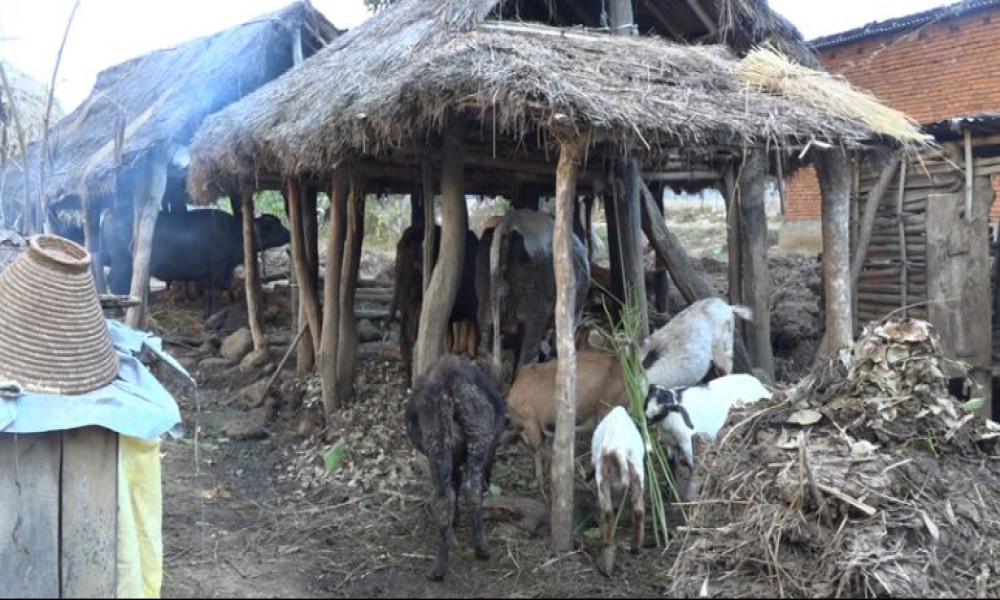In the Indian political map, clear boundaries have been drawn for the Adivasis, and when they cross those, their identity is suspected, questioned and changed immediately. One is stunned to know that as soon as they leave their territories, they are counted in the general category and their constitutional and legal rights are denied officially. But at the same time, the same sets of rules are not applied to the people of the privileged sections of the India society. Of course, it keeps happening with the Adivasis precisely because the Indian state is utterly biased against them on the basis of their race. But still they have no choice to cross the political boundaries because their own land, territory and resources have been grabbed in the name of economic growth, development of the nation and for the greater common good unconstitutionally and illegally. Thus, some of them cross their political boundaries in search of better livelihood opportunities, but most of these are forced to do so. However, the end result is, they are being slaughtered, raped, tortured, imprisoned and discriminated against actors across the country.
Unfortunately, instead of resolving these problems, the Indian state seems to be more interested in deploying more troops in the Adivasis’ territory, imposing curfews, shooting them, running relief camps and of course, buying their dead bodies too. Besides, the state also blames the Adivasis for their miseries. In the recent Assam violence unleashed on 23rd December by the extremist outfit the ‘National Democratic Front of Bodoland’ (Songbijit), 81 people, mostly Adivasis, were brutally killed, half of them women and children. This includes the killing of 3 innocent people by our brave soldiers, using their mighty power of ‘shoot on sight order’ on villagers were protesting against the violence. Besides, 15,000 people were made homeless and forced to live in the relief camps. Since then, the state called ‘India’ has been buying the dead bodies. 500,000 rupees has been paid for each dead body. Is this not shameful for the largest democracy on the Earth? How long will the state count the dead bodies and buy them?
Interestingly, whenever violence erupts in Assam, the Indian political class portrays it as the outcome of an ‘ethnic clash’. The state, whose prime responsibility is to uphold the constitution, which guarantees a dignified life to each and everyone in the country, either becomes merely a mute spectator or party to it. The questions to be raised is, why is the Indian state not able to resolve the ethnic clash in Assam? Is it merely an ethnic violence? Has the state not sponsored political violence in the name of the ethnicity? Everyone knows that the prime cause of violence is ‘self determination in the territory’. The Bodo Tribes claim that they are the owners of the territory, so the other people should desert it. Infiltration, demographic change, loss of land, shrinking of livelihood opportunities and intensified competition for political power have intensified a deadly potency to the issue of who has a right to Assam. Thus, Adivasis are called outsiders by Bodos, and the state has never been serious about resolving the issue for fear of losing the political mandate. Consequently the violence continues.
Of course, it’s very difficult to understand the algebra of the ‘Tribes’ and ‘scheduled’ in India. For instance, the webpage of the ‘Ministry of Tribal Affairs’ states two very strange aspects regarding the identity of the ‘Scheduled Tribes’. On the one hand, it says that when a person migrates from one state to another, he can claim to belong to a Scheduled Tribe only in relation to the state to which he originally belonged and not in respect of the state to which he has migrated, and on the other hand, it also states that a person who is a member of a Scheduled Tribe would continue to be a member of that Scheduled Tribe, even after his or her marriage with a person who does not belong to a Scheduled Tribe. How can there be two different parameters for the same Adivasis? How can persons born as Adivasis fall into a different category just after crossing their state’s boundary, whereas marrying a non-Adivasi make no difference? Why do the upper caste people enjoy the same rights and privileges across the country but Adivasis don’t? Is this not a state-sponsored crime against them?
The state sponsored crime against the Adivasis of Assam began in 1950, when they were denied the status of Scheduled Tribe (ST) in the Indian Constitution. However, the crime deepened in 1996 in the form of the ‘ethnic cleansing’, when 10,000 Adivasis were killed, thousands injured, and more than 200,000 were made homeless and compelled to live in relief camps for more than 15 years. Again, on 24 November, 2007, about 5000 Adivasi men, women and children were attacked in Beltola of Guwahati, while they attending a peaceful procession in demand of the Schedule Tribe status.They were attacked by the local people of Beltola, including shopkeepers. Consequently, 300 Adivasis were brutally wounded, hit by bamboos, iron rods and bricks. More than one person was killed, women were raped, and a teenage girl, Laxmi Oraon, was stripped, chased and kicked. As usual, the ‘police either remained mute spectators or joined the crowd in brutality. Instead of protecting Adivasis, the government justified the brutalities and fixed blame for this incident on Adivasi organisations.
In 2010, the Assam Government forcefully evicted the Adivasis of Lungsung forest block located at Kokrajhar district of Assam, where they had settled down ‘much earlier than 1965. The forest department claimed that they had ‘encroached’ this highly biodiverse forest, even though there was no forest as such anymore. Thus, the forest department launched an eviction move and deployed the forest protection force to evict these Adivasis. In this process, the forest protection force burnt down 67 villages, reducing them to ashes. Consequently, 7,013 Adivasis including 3,869 adults and 3,144 minors belonging to 1,267 families lost their homes. A 2 year-old boy, Mangal Hembrom, died after struggling between life and death for more than 2 months after being badly burnt during the eviction process. 40 people who were leading the protests against the eviction were arrested. Later on seven of these, who were students, were released, while the rest, comprising 33 men, were sent to Kokrajhar jail’. After protest and legal intervention, these too were released.
Historically, Adivasis were brought to the state of Assam in three different circumstances. Firstly, Adivasis in general and Santals in particulars were brought to Assam for their resettlement after the Santal Revolt of 1855. They were settled down especially in western Assam, in the area that is now the north-west of Kokrajhar district. This settlement is recorded in the year 1881. Secondly, in 1880, as the tea industry grew very fast, a large number of tea garden were set up In Assam, wor which there was soon a scarcity of labourers. The planters appointed, agents and sent them to various places to recruit people for labour. Thus, Adivasis were ‘coerced, kidnapped and incited to come to Assam, to live and work under appalling conditions.’ Thirdly, large scale land alienation for ‘development projects’ also pushed Adivasis into Assam in search of a better livelihood, as there were many job opportunities in the tea gardens. This is how Adivasis settled down in the state of Assam. Over a period of time, they cleared trees and bushes, and made cultivable land by shedding their sweat and blood.
Obviously, these Adivasis enjoyed the ‘Scheduled Tribe (ST) status during British rule. However, after India’s independence, they were de-scheduled in 1947, and from the moment when the Indian Constitution was enacted in 1950, they were considered as outsiders, since the then Chief Minister of Assam, Gopinath Bordoloi, opposed scheduling the Adivasis of Assam. Whereas the same ethnic groups enjoy the status of Scheduled Tribe (ST), with its rights and privileges, in their parental states, i.e. Jharkhand, Chhatisgarh, Madhya Pradesh, Bengal and Orissa, they are denied this status in the state of Assam. The government merely recognizes them as either tea or ex-tea tribes. Consequently, the people of Assam treat them as sub-human, terming them derogatively as Coolie-Bengalis or labourers – a classic example of discrimination of Adivasis by state and society.
The Adivasis are discriminated against at every level, which is, of course, a crime. For example, when the government evicted Adivasis in 1974, after strong people’s resistance, they promised to give them land entitlements. At that time, Samar Brahma was the forest minister, and as per his promise, he started the process of land allocation in a phased manner. However, he allocated the land to the Bodos and some other communities. With his expulsion, the whole process of land allocation also stopped, betraying his promise to the Adivasis. Similarly, according to the Forest Rights Act, 2006, Adivasis are entitled to claim their rights on the forest land which they possessed before 13thDecember, 2005. However, Adivasis in Assam are denied their rights under the FRA as well. In fact, the Adivasis who had been ‘living in Lungsung Forest areas much earlier than 1965’, were not given rights and entitlement on the forest lands which they had been cultivating for decades.
Indeed, the history of Assam suggests that the ‘state is itself a problem, not the solution. There are more than 70,00,000 Adivasis[18] residing in the state of Assam, who are still not recognized as ‘Scheduled Tribes’ merely due to the political fear of losing Bodo voters. The most stunning factor in this episode is the complete silence of the outspoken India Prime Minister, Narendra Modi. He has not yet opened his mouth on the Assam massacre, though the nation wants to know his reaction. On 25th December 2014, when the Adivasis of Assam were burying their dead bodies and crying for justice, he was busy in celebrating ‘good governance day’. Why is he silent? Is it only because the victims are marginalized people? Is it merely because most of the victims were Christians? How can the head of state be so narrow-minded, biased and selective? Or does he open his mouth only for the political gain?
The track record of Narendra Modi shows that after taking office as Prime Minister, he has spent most of his time either with the corporate sharks or wooing voters in political campaigns. It’s now the right time for him to show his courage through action aimed at protecting the rights of Adivasis, as he has been preaching other Adivasis territories. The ruling elites must understand that the violence in Assam is not just ethnic violence, but has become political ethnic violence, well-scripted and sponsored by the state. It is the need of the hour to uproot the main roots of violence, instead of using every incident to serve political interest. Since the ethnic problem of Assam is political, therefore the solution must be political. The billion dollar question is who will bell the cat?
Written by : Gladson Dungdung
Source : http://iva.aippnet.org/
Photo source: aisa.in









